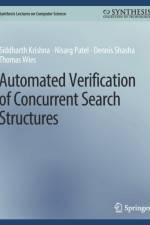av Razvan Alexandru Mezei
521
This book introduces a simplified approach to web application development using the open-source ASP .Net Core MVC framework. Readers will learn to implement web applications using the following languages and frameworks: HTML, JavaScript, CSS, Bootstrap, C#, ASP .Net, and Entity Framework Core. In addition, this book addresses how to build a web application to create user accounts, store data in a database, manipulate data, and how to allow controlled access to certain parts of the application functionality. The author also covers both client-side and server-side development and the use of an object relational mapper to work with persistent data (using a database). Topics include: models, views, controllers, routing, entity framework core, identity, layouts, dependency injection and services, model binder, among others. This book: Introduces the development of web applications using the open-source ASP .Net Core MVC frameworkImplements web applications including HTML, JavaScript, CSS, Bootstrap, C#, ASP .Net, and Entity Framework CoreFeatures client-side development, server-side development, and object relational mapper software













